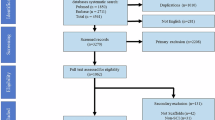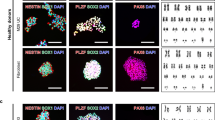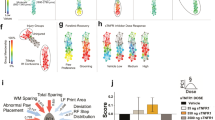Abstract
Study design:
The rat’s acellular spinal cord scaffold (ASCS) and spinal cord neurons were prepared in vitro to explore their biocompatibility.
Objectives:
The preparation of ASCS and co-culture with neuron may lay a foundation for clinical treatment of spinal cord injury (SCI).
Setting:
Tianjin Medical University General Hospital, China
Methods:
ASCS was prepared by chemical extraction method. Hematoxylin and eosin (H&E), myelin staining and scanning electron microscope were used to observe the surface structure of ASCS. Spinal cord neurons of rat were separated in vitro, and then co-cultured with prepared ASCS in virto.
Results:
The prepared ASCS showed mesh structure with small holes of different sizes. H&E staining showed that cell components were all removed. The ASCS possessed fine three-dimensional network porous structure. DNA components were not found in the ASCS by DNA agarose gel electrophoresis. The cultured cells express neuron-specific enolase (NSE) antigen with long axons. H&E staining showed that the neurons adhered to the pore structures of ASCS, and the cell growth was fine. The survival rate of co-cultured cells was (97.53±1.52%) by MTT detection. Immunohistochemical staining showed that neurons on the scaffold expressed NSE and NeuN antigen. Cells were arranged closely, and the channel structures of ASCS were fully filled with neurons. The cells accumulated in the channel and grew well in good state.
Conclusion:
The structure of ASCS remained intact, and the neurons were closely arranged in the scaffolds. These results may lay a solid foundation for clinical treatment of SCI when considering glial scar replacement by biomaterials.
Similar content being viewed by others
Log in or create a free account to read this content
Gain free access to this article, as well as selected content from this journal and more on nature.com
or
References
Ban DX, Ning GZ, Feng SQ, Wang Y, Zhou XH, Liu Y et al. Combination of activated Schwann cells with bone mesenchymal stem cells: the best cell strategy for repair after spinal cord Injury in rats. Regen Med 2011; 6: 707–720.
Ahmadzadeh G, Kouchaki A, Malekian A, Aminorro'aya M, Boroujeni AZ . The process of confrontation with disability in patients with spinal cord injury. Iran J Nurs Midwifery Res 2010; 15: 356–S362.
Bobis S, Jarocha D, Majka M . Mesenchymal stem cells: characteristics and clinical applications. Folia Histochem Cytobiol 2006; 44: 215–230.
Hu R, Zhou JJ, Luo CX, Lin JK, Wang XR, Li XG et al. Glial scar and neuroregeneration: histological, functional, and magnetic resonance imaging analysis in chronic spinal cord injury laboratory investigation. J Neurosurg Spine 2010; 13: 169.
Errmann JE, Shah RR, Chan AF, Zheng B . EphA4 deficient mice maintain astroglial-fibrotic scar formation after spinal cord injury. Exp Neurol 2010; 223: 582–598.
Fehlings MG, Hawryluk GW . Scarring after spinal cord injury. J Neurosurg Spine 2010; 13: 165–167.
Zhilai Z, Hui Z, Yinhai C, Zhong C, Shaoxiong M, Bo Y et al. Combination of NEP 1-40 infusion and bone marrow-derived neurospheres transplantation inhibit glial scar formation and promote functional recovery after rat spinal cord injury. Neurol India 2011; 59: 579–585.
Göritz C, Dias DO, Tomilin N, Barbacid M, Shupliakov O, Frisén J . A pericyte origin of spinal cord scar tissue. Science 2011; 333: 238–242.
Zhang H, Chang M, Hansen CN, Basso DM, Noble-Haeusslein LJ . Role of matrix metalloproteinases and therapeutic benefits of their inhibition in spinal cord injury. Neurotherapeutics 2011; 8: 206–220.
Konovalov NA, Nazarenko AG, Asyutin DS, Solenkova AV, Onoprienko RA, Zakirov BA et al. Comprehensive assessment of the outcomes of surgical treatment of patients with metastatic spinal cord injuries. Zh Vopr Neirokhir Im N N Burdenko 2015; 79: 34–44.
Zhang C, Morozova AY, Abakumov MA, Gubsky IL, Douglas P, Feng S et al. Precise delivery into chronic spinal cord injury syringomyelic cysts with magnetic nanoparticles MRI visualization. Med Sci Monit 2015; 21: 3179–3185.
Rahimkhani M, Mordadi A, Varmazyar S, Tavakoli A . Evaluation of urinary interleukin-8 levels in patients with spinal cord injury. Recent Pat Antiinfect Drug Discov 2014; 9: 144–149.
Goriely A, Geers MG, Holzapfel GA, Jayamohan J, Jérusalem A, Sivaloganathan S et al. Mechanics of the brain: perspectives, challenges, and opportunities. Biomech Model Mechanobiol 2015; 14: 931–965.
Tilley DM, Vallejo R, Kelley CA, Benyamin R, Cedeño DL . A continuous spinal cord stimulation model attenuates pain-related behavior in vivo following induction of a peripheral nerve injury. Neuromodulation 2015; 18: 171–176.
Dalbayrak S, Yaman O, Yilmaz M, Naderi S . Results of the transsternal approach to cervicothoracic junction lesions. Turk Neurosurg 2014; 24: 720–725.
Lin E, Long H, Li G, Lei W . Does diffusion tensor data reflect pathological changes in the spinal cord with chronicinjury. Neural Regen Res 2013; 8: 3382–3390.
Yang H, Lu X, Wang X, Chen D, Yuan W, Yang L et al. A new method to determine whether ossified posterior longitudinal ligament can be resected completely and safely: spinal canal ‘Rule of Nine’ on axial computed tomography. Eur Spine J 2015; 24: 1673–1680.
Dlouhy BJ, Awe O, Rao RC, Kirby PA, Hitchon PW . Autograft-derived spinal cord mass following olfactory mucosal cell transplantation in aspinal cord injury patient: case report. J Neurosurg Spine 2014; 21: 618–622.
Hellal F, Hurtado A, Ruschel J, Flynn KC, Laskowski CJ, Umlauf M et al. Microtubule stabilization reduces scarring and causes axon regeneration after spinal cord injury. Science 2011; 331: 928–931.
Zhang SX, Geddes JW, Owens JL, Holmberg EG . X-irradiation reduces lesion scarring at the contusion site of adult rat spinal cord. Histol Histopathol 2005; 20: 519–530.
Ridet JL, Pencalet P, Belcram M, Giraudeau B, Chastang C, Philippon J et al. Effects of spinal cord X-irradiation on the recovery of paraplegic rats. Exp Neurol 2000; 161: 1–14.
Dolmans DE, Fukumura D, Jain RK . Photodynamic therapy for cancer. Nat Rev Cancer 2003; 3: 380–387.
Coupienne I, Bontems S, Dewaele M, Rubio N, Habraken Y, Fulda S et al. NF-kappaB inhibition improves the sensitivity of human glioblastoma cells to 5-aminolevulinic acid-based photodynamic therapy. Biochem Pharmacol 2011; 81: 606–616.
Jeremic G, Brandt MG, Jordan K, Doyle PC, Yu E, Moore CC . Using photodynamic therapy as a neoadjuvant treatment in the surgical excision of nonmelanotic skin cancers: prospective study. J Otolaryngol Head Neck Surg 2011; 40: S82–S89.
Usuda J, Ichinose S, Ishizumi T, Hayashi H, Ohtani K, Maehara S et al. Outcome of photodynamic therapy using NPe6 for bronchogenic carcinomas in central airways >1.0 cm in diameter. Clin Cancer Res 2010; 16: 2198–2204.
Odergren A, Algvere PV, Seregard S, Libert C, Kvanta A . Vision-related function after low-dose transpupillary thermotherapy versus photodynamic therapy for neovascular age-related macular degeneration. Acta Ophthalmol 2010; 88: 426–430.
Kuningas K, Päkkilä H, Ukonaho T, Rantanen T, Lövgren T, Soukka T . Upconversion fluorescence enables homogeneous immunoassay in whole blood. Clin Chem 2007; 53: 145–146.
van De Rijke F, Zijlmans H, Li S, Vail T, Raap AK, Niedbala RS et al. Up-converting phosphor reporters for nucleic acid microarrays. Nat Biotechnol 2001; 19: 273–276.
Chatterjee DK, Fong LS, Zhang Y . Nanoparticles in photodynamic therapy: an emerging paradigm. Adv Drug Deliv Rev 2008; 60: 1627–1637.
Abdul Jalil R, Zhang Y . Biocompatibility of silica coated NaYF(4) upconversion fluorescent nanocrystals. Biomaterials 2008; 29: 4122–4128.
Idris NM, Li Z, Ye L, Sim EK, Mahendran R, Ho PC et al. Tracking transplanted cells in live animal using upconversion fluorescent nanoparticles. Biomaterials 2009; 30: 5104–5113.
Chen GY, Liu Y, Zhang YG, Somesfalean G, Zhang ZG, Sun Q et al. Bright white upconversion luminescence in rare-earth-ion-doped Y2O3 nanocrystals. Phys Lett 2007; 91: 133–134.
Nyk M, Kumar R, Ohulchanskyy TY, Bergey EJ, Prasad PN . High contrast in vitro and in vivo photoluminescence bioimaging using near infrared to near infrared up-conversion in Tm3+ and Yb3+ doped fluoride nanophosphors. Nano Lett 2008; 8: 3834–3838.
Xiong L, Yang T, Yang Y, Xu C, Li F . Long-term in vivo biodistribution imaging and toxicity of polyacrylic acid-coated upconversion nanophosphors. Biomaterials 2010; 31: 7078–7085.
Neupane J, Ghimire S, Shakya S, Chaudhary L, Shrivastava VP . Effect of light emitting diodes in the photodynamic therapy of rheumatoid arthritis. Photodiagnosis Photodyn Ther 2010; 7: 44–49.
Zhang P, Steelant W, Kumar M, Scholfield M . Versatile photosensitizers for photodynamic therapy at infrared excitation. J Am Chem Soc 2007; 129: 4526–4527.
Zijlmans HJ, Bonnet J, Burton J, Kardos K, Vail T, Niedbala RS et al. Detection of cell and tissue surface antigens using up-converting phosphors: a new reporter technology. Anal Biochem 1999; 267: 30–36.
Voura EB, Jaiswal JK . Tracking metastatic tumor cell extravasation with quantum dot nanocrystals and fluorescence emission scanning microscopy. Nat Med 2004; 10: 993–998.
Zhang QB, Song K, Zhao JW, Kong X, Sun Y, Liu X et al. Hexanedioic acid mediated surface-ligand-exchange process for transferring NaYF4: Yb/Er(or Yb/Tm) up-converting nanoparticles from hydrophobic to hydrophilic. J Colloid Interface Sci 2009; 336: 171–175.
Zhang P, Steelant W, Kumar M, Scholfield M . Versatile photosensitizers for photodynamic therapy at infrared excitation. J Am Chem Soc 2007; 129: 4526–4527.
Yu MX, Li FY, Chen ZG, Hu H, Zhan C, Yang H et al. Laser scanning up-conversion luminescence microscopy for imaging cells labeled with rare-earth nanophospors. Anal Chem 2009; 81: 930–935.
Chen ZG, Chen HL, Hu H, Yu M, Li F, Zhang Q et al. Versatile synthesis strategy for carboxylic acid functionalized upconverting nanophosphors as biological labels. J Am Chem Soc 2008; 130: 3023–3029.
Wang F, Banerjee D, Liu YS, Chen X, Liu X . Upconversion nanoparticles in biological labeling, imaging, and therapy. Analyst 2010; 135: 1839–1854.
Li ZQ, Zhang Y . An efficient and user-friendly method for the synthesis of hexagonal-phase NaYF4: Yb, Er/Tm nanocrystals with controllable shape and upconversion fuorescence. Nanotechnology 2008; 19: 345606.
Wang M, Mi CC, Liu JL et al. One-step synthesis and characterization of water-soluble NaYF4: Yb, Er/polymer nanoparticles with efficient up-conversion fuorescence. J Alloys Compounds 2009; 485: 24–27.
Budijono SJ, Shan JN, Yao N, Miura Y, Hoye T, Austin RH et al. Synthesis of stable block-copolymer-protected NaYF4: Yb3+, Er3+ up-converting phosphor nanoparticles. Chem Mater 2010; 22: 311–318.
Chen GY, Ohulchanskyy TY, Kumar R, Agren H, Prasad PN . Ultrasmall monodisperse NaYF4: Yb3+/Tm3+ nanocrystals with enhanced near-infrared to near-infraredupconversion photoluminescence. ACS Nano 2010; 4: 3163–3168.
Wang M, Mi CC, Wang WX, Liu CH, Wu YF, Xu ZR et al. Immunolabelling and NIR-excited fluorescent imaging of HeLa cells by using NaYF4: Yb, Er upconversion nanoparticles. ACS Nano 2009; 3: 1580–1586.
Audet N, Charfi I, Mnie-Filali O, Amraei M, Chabot-Dore AJ, Millecamps M . Differential association of receptor-G betagamma complexes with beta-arrestin2 determines recycling bias and potential for tolerance of delta opioid receptor agonists. J Neurosci 2012; 32: 4827–4840.
Clarke LE, Barres BA . Emerging roles of astrocytes in neural circuit development. Nat Rev Neurosci 2013; 14: 311–321.
Colantuoni C, Jeon OH, Hyder K, Chenchik A, Khimani AH, Narayanan V et al. Gene expression profiling in postmortem Rett syndrome brain: differential gene expression and patient classification. Neurobiol Dis 2001; 8: 847–865.
Colombo JA . Interlaminar astroglial processes in the cerebral cortex of adult monkeys but not of adult rats. Acta Anat (Basel) 1996; 155: 57–62.
Figueiredo M, Lane S, Tang F, Liu BH, Hewinson J, Marina N et al. Optogenetic experimentation on astrocytes. Exp Physiol 2011; 96: 40–50.
Freeman MR, Rowitch DH . Evolving concepts of gliogenesis: a look way back and ahead to the next 25 years. Neuron 2013; 80: 613–623.
Freund TF, Katona I, Piomelli D . Role of endogenous cannabinoids in synaptic signaling. Physiol Rev 2003; 83: 1017–1066.
Han X, Chen M, Wang F, Windrem M, Wang S, Shanz S et al. Forebrain engraftment by human glial progenitor cells enhances synaptic plasticity and learning in adult mice. Cell Stem Cell 2013; 12: 342–353.
Henneberger C, Papouin T, Oliet SH, Rusakov DA . Long-term potentiation depends on release of D-serine from astrocytes. Nature 2010; 463: 232–236.
Lee Y, Su M, Messing A, Brenner M . Astrocyte heterogeneity revealed by expression of a GFAP-LacZ transgene. Glia 2006; 53: 677–687.
Matyash V, Kettenmann H . Heterogeneity in astrocyte morphology and physiology. Brain Res Rev 2010; 63: 2–10.
Nedergaard M, Verkhratsky A . Artifact versus reality: how astrocytes contribute to synaptic events. Glia 2012; 60: 1013–1023.
Ross K, Cherpelis B, Lien M, Fenske N . Spotlighting the role of photodynamic therapy in cutaneous malignancy: an update and expansion. Dermatol Surg 2013; 39: 1733–1744.
Acknowledgements
This work was sponsored by State Key Program of National Natural Science Foundation of China (81330042), Special Program for Sino-Russian Joint Research Sponsored by the Ministry of Science and Technology, China (2014DFR31210), Key Program Sponsored by the Tianjin Science and Technology Committee, China (13RCGFSY19000 14ZCZDSY00044), National Natural Science Foundation of China (81201399) and National Natural Science Foundation of China (81301544).
Author information
Authors and Affiliations
Corresponding author
Ethics declarations
Competing interests
The authors declare no conflict of interest.
Rights and permissions
About this article
Cite this article
Ban, DX., Liu, Y., Cao, TW. et al. The preparation of rat’s acellular spinal cord scaffold and co-culture with rat’s spinal cord neuron in vitro. Spinal Cord 55, 411–418 (2017). https://doi.org/10.1038/sc.2016.144
Received:
Revised:
Accepted:
Published:
Issue date:
DOI: https://doi.org/10.1038/sc.2016.144
This article is cited by
-
ECM in Differentiation: A Review of Matrix Structure, Composition and Mechanical Properties
Annals of Biomedical Engineering (2020)



